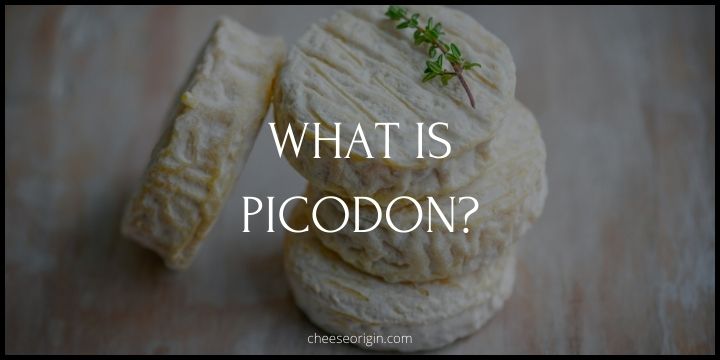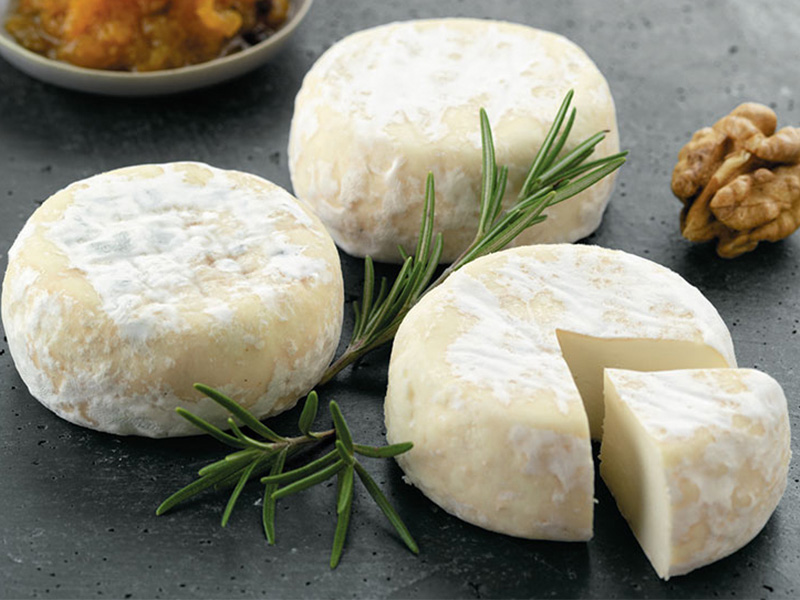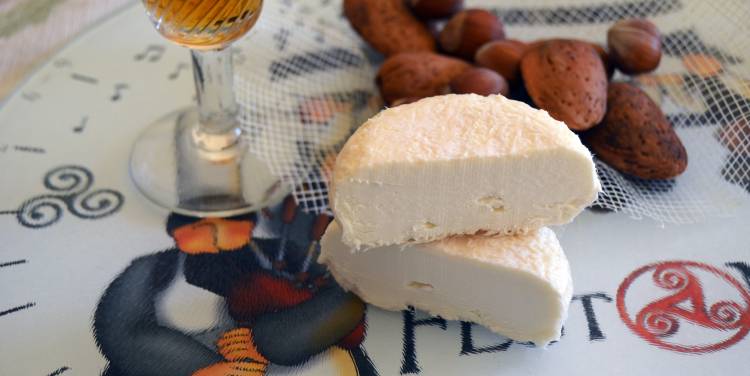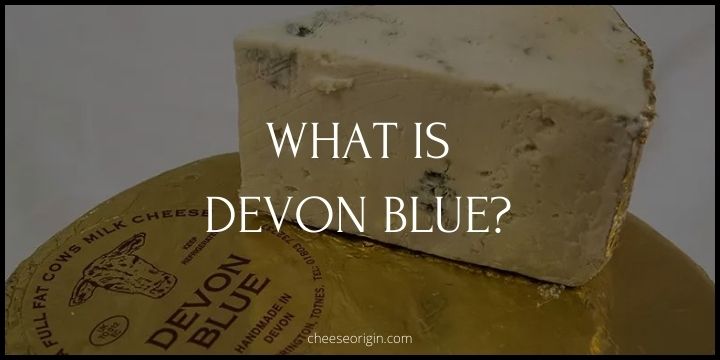What is Picodon? The Spicy Jewel of Southern France

Picodon, a veritable spicy jewel of Southern France, is much more than just a cheese. It’s a testament to the region’s rich cultural heritage, a celebration of traditional cheesemaking techniques passed down through generations, and an embodiment of the unique terroir that lends it such a distinctive flavor.
This small, disc-shaped cheese, produced in the Rhône-Alpes and Languedoc-Roussillon regions, is crafted from the milk of goats that graze freely on the varied flora of the rugged southern French landscape. The result? A cheese bursting with complex flavors – tangy, salty, and yes, delightfully spicy.
Picodon comes in various stages of aging, each offering its own symphony of tastes. Young Picodon is creamy, mild, and subtly nutty, while a well-aged one transforms into a robust, intensely flavorful cheese with a firm texture.
Embraced by cheese connoisseurs around the globe for its unique taste profile and versatility, Picodon is indeed a spicy jewel that adds a touch of Southern France to any culinary experience. Whether savored on its own, paired with a glass of local wine, or used to enrich a variety of dishes, Picodon never fails to impress with its bold, unforgettable character.
Quick Facts About Picodon
| Fact | Details |
|---|---|
| Country of Origin | France |
| Region | Rhône-Alpes |
| Age | 1 month (minimum 2 weeks) |
| Classification | Aged fresh, Semi-soft, Artisan |
| Milk | Unpasteurized goat’s milk |
| Rind | Natural, sometimes coated in ash or mold |
| Weight and Shape | 80 to 120 g (3 to 4 oz), Disk |
| Fat Content | 45% |
| Size | Diameter 6 to 7 cm (2.5 to 3 inches), Height 2 to 3 cm (0.75 to 1 inch) |
| Aroma | Fermented, pungent, acute |
| Flavor | Slightly acidic, fruity, and nutty |
| Taste | Strong, bittersweet, yeasty, spicy |
| Pairing | Côtes du Rhône, Beaujolais-village, Muscat de Beaumes de Venise |
| Texture | Creamy-moist to flaky-hard with age |
| Color | White |
What is Picodon?

Picodon is a unique and flavorful goat’s milk cheese that originates from the beautiful region around the Rhône in southern France. The name “Picodon” itself is intriguing, as it means “spicy” in Occitan, indicating the distinctive flavor profile of this cheese. In an old French dialect, Picodon also translates to “to sting”, hinting at the sharp taste that this cheese offers.
This small, round cheese, often compared to the size of a hockey puck, undergoes a meticulous process before it is ready to be enjoyed. It starts with raw goat’s milk which is transformed into cheese over a period of two weeks. The transformation results in a cheese with a hard, natural rind that is often covered in mold. This mold can be present in various colors – blue, white, or yellow – depending on the aging process.
The flavor of Picodon is not for the faint-hearted. Derived from the Occitan term ‘picaoudou’, which means “the little thing that stings a bit,” Picodon always brings a certain punch to the palate. Despite its strong, yeasty, and spicy taste, there’s a balance of sweetness and sourness that makes this cheese truly delectable.
Picodon is versatile and can be used in a variety of ways. With 45% fat, it can be enjoyed on its own, paired with good wine, or used to enhance the flavor of salads and other dishes. Regardless of how you choose to enjoy it, Picodon remains a testament to the rich, culinary heritage of France.
What Does Picodon Taste Like?
Picodon is a cheese that presents a complex, layered taste profile. The initial bite is slightly acidic, with a hint of sourness that is characteristic of goat’s milk cheeses. As you continue to savor it, you’ll notice a subtly sweet, fruity undertone that balances the tanginess.
The flavor intensifies as the cheese ages, evolving into a strong, yeasty, and distinctly spicy taste, hence its name “Picodon,” which means ‘spicy’ in the local dialect. This robust flavor can be quite assertive, especially in well-aged Picodon, but it’s this boldness that makes it stand out.
The rind, often coated in mold or ash, adds another layer of complexity to the flavor. It imparts an earthy, almost smoky taste to the cheese. Some describe the overall flavor as being similar to a mixture of lemon zest and black pepper, with a slight bitterness towards the end.
In terms of texture, young Picodon is creamy and moist, while older ones develop a flaky-hard texture. The contrast between the sharp, intense flavor and the varying textures makes eating Picodon a truly unique culinary experience.
Note: individual experiences may vary, given the subjective nature of taste and the variations in production methods.
Picodon Tasting Notes

- Initial Taste: Picodon’s first impression on the palate is a slightly acidic, tangy taste typical of goat’s milk cheese.
- Fruity Undertones: Beneath the initial tanginess, there’s a subtle sweetness and a hint of fruity flavors that balance the acidity.
- Spiciness: True to its name, which translates to ‘spicy’, Picodon develops a strong, yeasty, and distinctly spicy flavor as it matures.
- Earthy Rind Flavors: The rind, often coated with mold or ash, imparts an earthy, smoky profile to the cheese, adding another layer of complexity.
- Bitterness: Some tasters have reported a slight bitterness towards the end, especially in well-aged Picodon.
- Texture Contrast: Young Picodon offers a creamy, moist texture whereas older ones can be flaky-hard, providing a textural contrast that complements its bold flavors.
- Aroma: Picodon comes with a fermented, pungent aroma, intensifying as the cheese ages.
- Pairing Notes: Picodon pairs well with a range of wines, particularly Côtes du Rhône, Beaujolais-village, and Muscat de Beaumes de Venise. It can also be used to enhance the flavor of salads and other dishes.
How is Picodon Made?
Picodon is a distinctive cheese that originates from the mountainous regions of Ardeche and Drome in France. The process of making Picodon involves several key steps:
- Milk Collection: The process begins with the collection of whole goat’s milk. This milk is often sourced from local farms to ensure freshness.
- Fermentation: The collected milk is then left to ferment, a process that is crucial for developing the cheese’s distinctive flavor.
- Cheese Making: After fermentation, the milk undergoes a cheese-making process that includes coagulation, cutting the curd, and molding. The cheese is then pressed to remove whey and help it retain its shape.
- Aging: The molded cheese is left to age over a period of two weeks or more. During this time, the cheese develops a firm rind covered in mold that can take on different colors – blue, white, or yellow – depending on the aging process and the environment.
- Quality Control: The final product must contain a minimum of 45% fat. It is also important to note that Picodon has been protected by appellation d’origine contrôlée (AOC) status since 1983, which means that it must adhere to strict production standards to maintain its authenticity.
- Packaging and Distribution: Once aged and approved, the cheeses are packaged and distributed. They are typically small, weighing between 45 to 60 grams, and are sold in discs.
Note: the production methods can vary between fermier (farmhouse), artisanal, and industriel (industrial), each contributing to the unique characteristics of the final product.
Also read: The Difference Between Farmstead, Artisanal & Dairy Cheeses
7 Best Picodon Substitutes
| Substitute | Why It Works |
|---|---|
| Chèvre | Similar to Picodon in terms of tanginess and texture but less intense |
| Feta | Tangy flavor and crumbly texture can replace Picodon in salads and baked dishes |
| Roquefort | Strong, tangy taste and smooth texture can match the intensity of a well-aged Picodon |
| Crottin de Chavignol | Nutty flavor and firm texture can replace Picodon in recipes that require a cheese with a bold flavor |
| Pouligny-Saint-Pierre | Subtle, nutty flavor and creamy texture can work as a milder alternative to Picodon |
| Bucheron | Creamy, tart flavor similar to Picodon, but its texture is softer, making it a good substitute in recipes that call for a spreadable cheese |
| Valençay | Fresh, lemony taste and creamy texture. Substituting Picodon with Valençay can add a refreshing twist to your dishes |
What Pairs Well With Picodon?

Food that goes well with Picodon:
| Category | Food |
|---|---|
| Bread/Crackers | Whole grain bread, baguette, or artisan crackers |
| Fruits | Grapes, figs, or apples |
| Nuts | Walnuts or almonds |
| Meat/Charcuterie | Salami, prosciutto, or other cured meats |
| Condiments | Honey, fig jam, or mustard |
| Vegetables | Roasted bell peppers, sundried tomatoes, or olives |
| Desserts | Dark chocolate or fruit tarts |
Also read: 11 Best Crackers that Pair Well with Cheese
Beverage that goes well with Picodon:
| Category | Beverage |
|---|---|
| Wine | Sancerre, Sauvignon Blanc, or Côtes du Rhône |
| Beer | Belgian Tripel, Saison, or Pale Ale |
| Spirits | Calvados or Cognac |
| Non-alcoholic | Sparkling water, apple cider, or grape juice |
Also read: Best Wine and Cheese Pairings: The Ultimate Guide
Also read:
- What is Salers Cheese? A Flavorful Journey into France’s Cantal Mountains
- What is Brocciu? The Symbolic Cheese of Corsica
- What is Langres? Tasting the Unique Flavor of Champagne Ardenne
- What is Fourme d’Ambert? The Pillar of French Blue Cheeses
- What is Mâconnais? The Petite Powerhouse of French Cheeses
- What is Charolais Cheese? A Taste of Bourgogne’s Artisanal Delight
- What is Vacherin Mont d’Or? The ‘Holy Grail’ of Soft Cheeses





